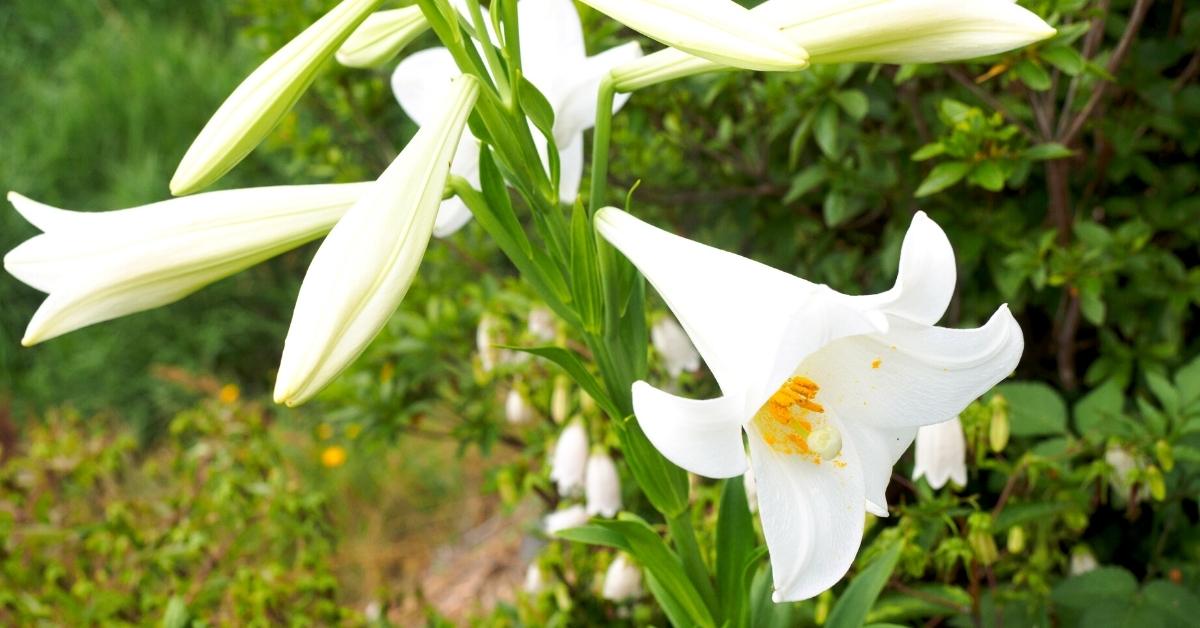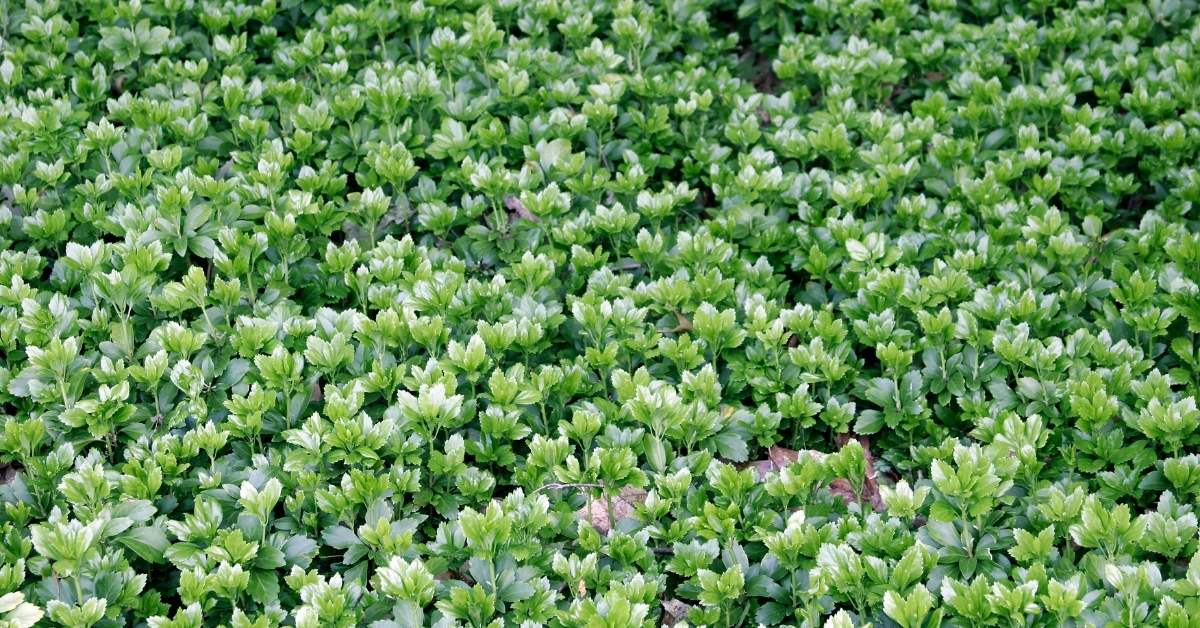Buddleja, Buddleja, or butterfly bush, is one of the most fragrant garden plants (and indeed, seeing it full of butterflies is a great gardening experience).
Growing Butterfly Bush
This Chinese native is hardy into USDA zone 5 (4 with deep mulch) but dies to the ground in this zone. It does perform much better in warmer gardens than this, as it has demonstrated a tendency to self-sow and become a nuisance-invasive plant.
In these warmer areas of Zone 7, the butterfly bush can become a large shrub between 5-10 feet tall. In colder zones, it is not unusual to see it grow 5 feet in a single year before blossoming before being killed to the ground by winter.
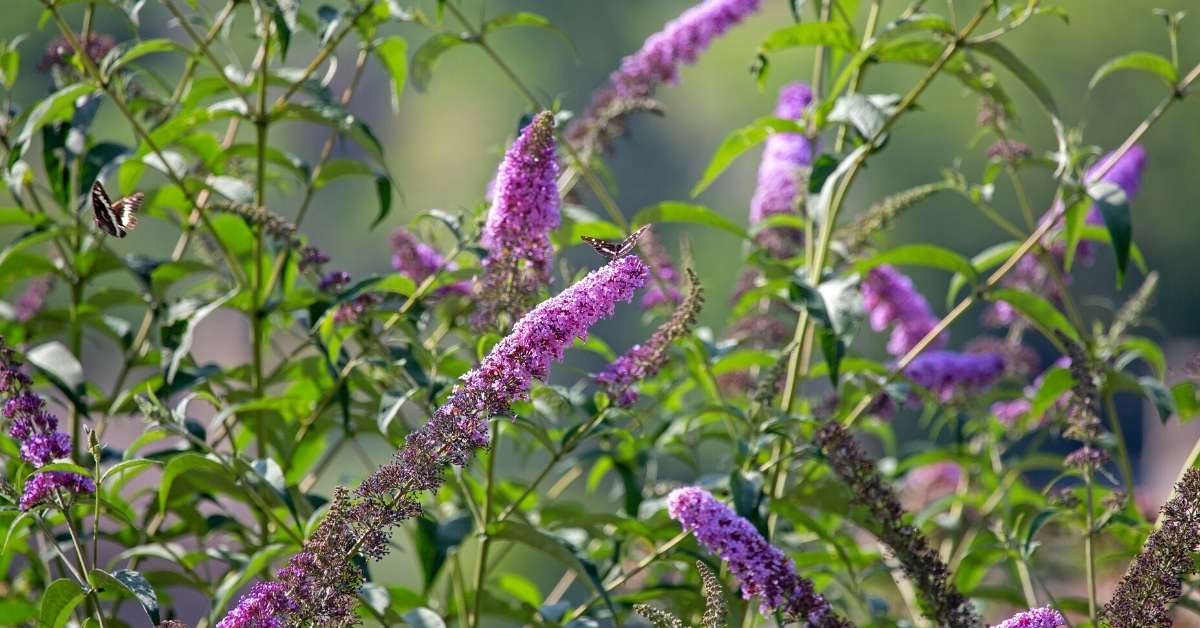
Buddleja has a straggly growth habit – and those in warm climates who have an ugly-looking plant can cut it to the ground to renovate it. The plant blooms on new wood, so heavy pruning will not reduce the number of blooms.
Highly fragrant
It is a good thing those flowers are extremely fragrant as; otherwise, butterfly bush wouldn’t be included in a good garden. It has no fall coloring to speak of, although the leaves stay on the plant for a long time into the fall.
But the flowers! They range in length from 4-10 inches, and while the most common color is lilac-purple, there are others in the pinks, reds, whites, and shades of purplish-violet.
And these flowers are extremely fragrant while blooming from late summer to heavy frost.
Deadhead regularly to increase the number of blooms.
The seeds are carried in small fruit which has no ornamental value (too tiny).
Soil type
Butterfly bush grows best in full sun and fertile soils. You’ll get the heaviest bloom there, and shade will simply reduce the growth and flowers. I put a plant into the medium shade one summer to try it there, and it languished all summer, throwing spindly shoots.
Suppose you want to make a statement in the summer garden, plant buddleia in clumps. One plant alone can be ugly unless it is in bloom, but a clump of three looks like a spreading shrub.
One solution is to treat the butterfly bush as an herbaceous perennial (I do) in the middle to back of the border and cut it to the ground in the fall along with the rest of the plants.
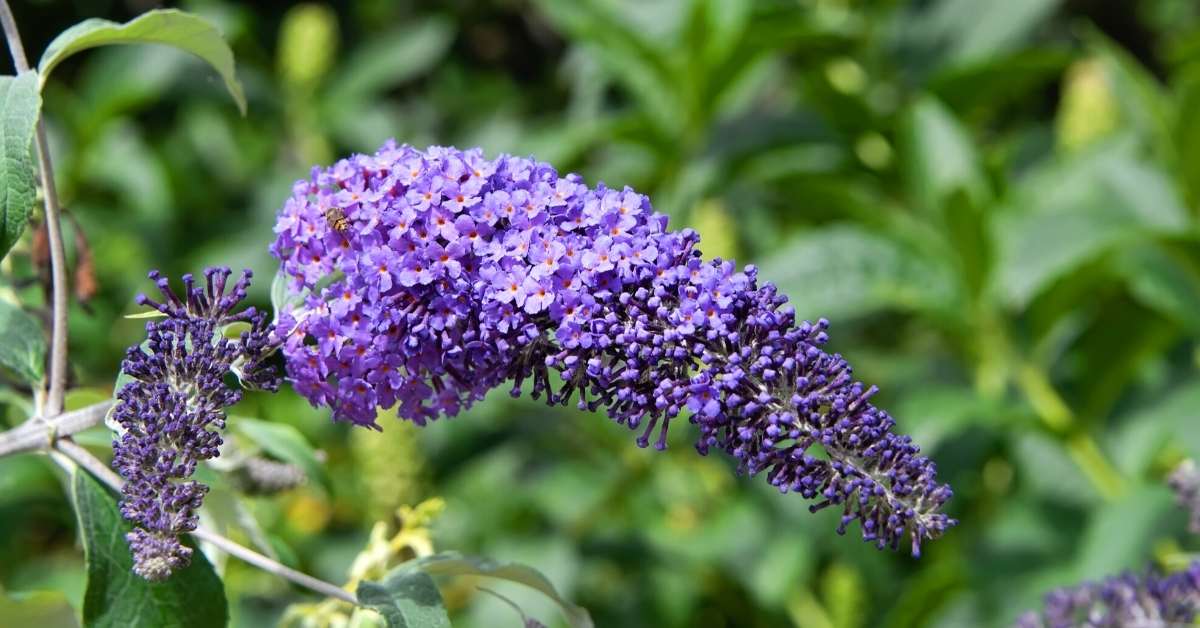
Growing Buddleia from seed
The seed starts readily and easily with a soil temperature of 70F, and a small plant started in January will give a small bloom the first year in the fall (if grown in fertile soils). Named plants can be easily started using regular tender tip cuttings.
Once the cuttings have rooted, transplant them into larger pots and do not overwater; they have a tendency to rot quickly if overwatered.
How to attract butterflies to your garden
One of the main reasons to grow butterfly bush is to attract these beautiful pollinators to your garden. Butterflies are not only lovely to look at, but they also help pollinate other flowers and plants. To make your garden more appealing to butterflies, you can follow these tips:
- Plant a variety of nectar-rich flowers that bloom at different times of the year. Butterflies have different preferences and needs depending on the season, so having a diverse selection of flowers will ensure that they always have something to feed on.
- Provide water sources for butterflies to drink from. You can use a shallow dish, a birdbath, or a fountain with some rocks or pebbles for them to land on. Make sure to change the water regularly and keep it clean.
- Avoid using pesticides or insecticides in your garden. These chemicals can harm butterflies and other beneficial insects, as well as the plants they feed on. Instead, use organic methods to control pests and diseases, such as companion planting, mulching, and hand-picking.
- Create sheltered areas for butterflies to rest and hide from predators. You can use shrubs, trees, vines, or trellises to create some shade and cover for them. You can also leave some leaf litter or dead branches on the ground for them to use as nesting materials.
How to propagate butterfly bush
Butterfly bush is easy to propagate by seeds, cuttings, or division. Here are the steps for each method:
- Seeds: You can collect seeds from the dried flower heads of butterfly bushes in late fall or early winter. Store them in a cool, dry place until spring. Sow them in pots or trays filled with moist potting mix. Cover them lightly with soil and keep them in a warm, bright place. Water them regularly and thin out the seedlings when they have two sets of true leaves. Transplant them into larger pots or into the garden when they are about 6 inches tall.
- Cuttings: You can take softwood cuttings from the new growth of butterfly bush in late spring or early summer. Cut 4-6 inch long stems with at least three sets of leaves. Remove the lower leaves and dip the cut end in the rooting hormone. Insert them into pots or trays filled with moist potting mix. Cover them with a plastic bag or a dome to create a humid environment. Place them in a bright, warm place out of direct sunlight. Water them regularly and check for roots after 4-6 weeks. Transplant them into larger pots or into the garden when they are well-rooted.
- Division: You can divide mature butterfly bush plants in early spring or late fall. Dig up the plant carefully and shake off the excess soil. Cut the root ball into smaller sections with a sharp knife or a spade. Make sure each section has some roots and shoots attached. Replant them into new locations or into pots filled with fresh potting mix. Water them well and apply some mulch around them.
How to care for butterfly bush
The butterfly bush is a low-maintenance plant that does not require much attention once established. However, there are some things you can do to keep it healthy and happy:
- Water it deeply and infrequently during dry spells. Butterfly bush is drought-tolerant, but it will appreciate some moisture during hot and dry weather. Avoid overwatering it, as this can cause root rot and fungal diseases.
- Fertilize it lightly once or twice a year in spring and summer. Butterfly bush does not need much fertilizer, as this can reduce its flowering and make it more prone to pests and diseases. Use a balanced organic fertilizer or compost tea and apply it around the base of the plant.
- Prune it back hard in late winter or early spring before new growth emerges. Butterfly bush blooms on new wood, so pruning it will encourage more flowers and prevent them from becoming leggy and woody. Cut back all the stems to about 12 inches from the ground, leaving some buds intact. You can also deadhead the spent flowers throughout the season to prolong the blooming period.
- Protect it from frost and cold winds in winter. Butterfly bush is hardy in zones 5-9, but it may suffer some damage from freezing temperatures and harsh winds in colder areas. You can cover it with a layer of mulch, straw, or leaves to insulate the roots and lower stems. You can also wrap it with burlap, fleece, or plastic to shield it from windburn.
Commonly available varieties include:
var. nanhoensis – Compact form (4′-8′ tall). Hybrids include ‘Nanho Alba,’ ‘Nanho Blue,’ and ‘Nanho Purple,’ ‘Black Knight’ has dark purple flowers and is slightly more cold-hardy than the species.
‘Dartmoor’ – branched flowers with magenta/purple blooms. It can be a big plant.
‘Empire Blue’ – Flowers violet-blue with an orange eye. Upright growth.
‘Fascination’ – Lilac-pink flowers on large panicles 13″ to 18″ long. Vigorous
‘Harlequin’ – White and green variegated foliage with reddish-purple flowers. Not a vigorous grower.
‘Honeycomb’ – An extremely popular yellow-flowering hybrid butterfly bush
‘Lochinch’ – A silvery leaf compact plant. The flowers are lavender with an orange eye and are in smaller clusters (5″-6″ long) than normal.
‘Royal Red’ – The best red-flowered form. Flowers up to 20″ long.
‘White Profusion’ – White flowers, but flowers only 6″ to 8″ long.
Buddleja Davidii – Pink
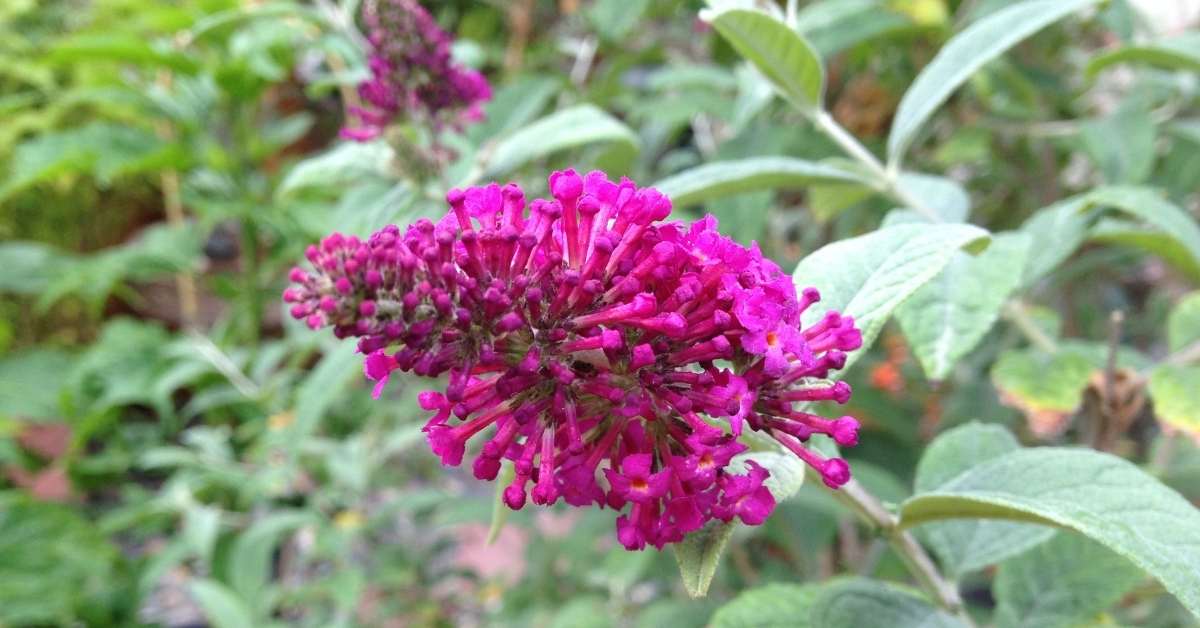
There were already two magnificent deep pink cultivars before cultivars like ‘Sugar Plum’ and ‘Miss Ruby’ expanded the palette of Buddleja colors – yet both had problems. ‘Pink Spread’ has lovely pink-red blooms and a horrible, thin, spreading growth habit; worse, it doesn’t renew effectively from the base, leaving a considerable amount of the old wood showing.
‘‘Summer Beauty is a lovely plant with brilliant cerise-pink blooms, but it’s difficult to propagate and grow, and the blossoms sometimes fade to mauve color.
Given the drawbacks of both ‘Pink Spread’ and ‘Summer Beauty,’ it may be a mistake to utilize them to produce new cultivars. All of the ‘Summer Beauty’ seedlings I’ve grown have ended up in the compost heap. On the other hand, a few ‘Pink Spread’ offspring have performed admirably.
Because the one pictured is a result of a cross with ‘Summer Beauty,’ it might have inherited both of their undesirable behaviors. All of its siblings had been rejected. This one jumped out since it had a nice color and a significant growth habit.
The blooms have a reddish-pink color that fades to a mosaic of brighter and deeper colors. The panicle is very big and open. It spreads quickly and has a moderate amount of vigor without becoming uncontrolled.
It isn’t ideal yet, in my opinion. It’s still a work in progress, and I’m seeking a good partner to help me develop the next iteration.
Buddleja alternifolia
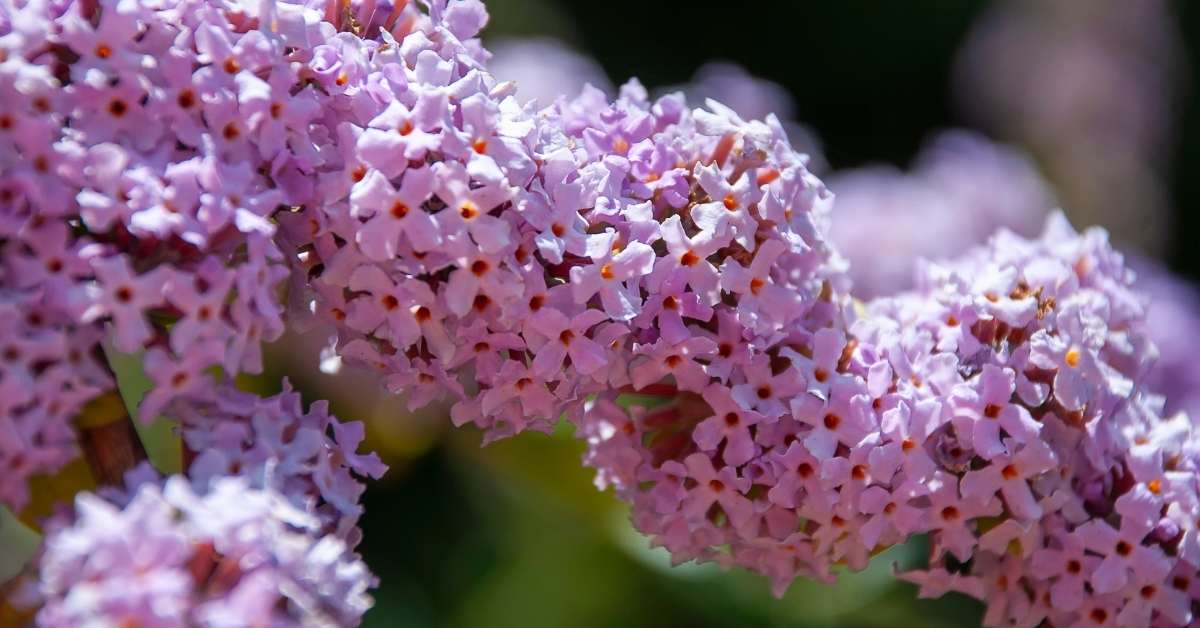
Buddleja alternifolia is a bushy, deciduous shrub with a spreading habit that grows quickly.
It is frequently trimmed to a single trunk to emphasize the beautiful arching stems that give the plant a weeping appearance, although it may still be a magnificent bushy shrub.
Small clusters of fragrant lilac-purple tubular blooms cover the stalks in the summer. The clusters can grow so thick that the stems are entirely encircled.
It prefers to be in the sun, although it will tolerate moderate shade. However, it will produce fewer blooms and seem less dense in the shadow.
Use borders to create the sense of a country garden.
Soil: Soils with good drainage.
Once-blooming is completed, prune the plant once a year. Remove any old branches from the base and trim the flower shoots to just above some fresh growth. Don’t go overboard; simply remove around 25% of the old stems.
Watch the video to see how to grow Black Knight Butterfly Bush (Dark Purple Butterfly Bush)
Conclusion
Butterfly bush is a wonderful plant to grow in your garden if you love fragrant flowers and colorful butterflies. It is easy to grow, propagate, and care for as long as you provide it with enough sun, water, and pruning. You can choose from a variety of colors and sizes to suit your garden style and space. By following the tips in this article, you can enjoy the beauty and benefits of butterfly bush for years to come.
FAQ
Is butterfly bush invasive?
Butterfly bush can be invasive in some areas where it self-seeds prolifically and crowds out native plants. To prevent this, you can choose sterile cultivars that do not produce seeds or remove the flower heads before they set seeds. You can also check with your local extension office or nursery before planting butterfly bush to make sure it is not a problem in your region.
How do I get rid of butterfly bush?
If you want to get rid of a butterfly bush, you will need to dig up the entire plant, including the roots, and dispose of it properly. Do not compost or burn it, as this can spread the seeds or cause resprouting. You can also apply a systemic herbicide to the cut stems or foliage, following the label instructions carefully.
What are some good companion plants for butterfly bushes?
Some good companion plants for butterfly bush are those that have similar growing conditions and complement their colors and shapes. For example, you can plant coneflowers, black-eyed Susans, bee balm, salvia, lavender, catmint, or yarrow for more nectar sources for butterflies. You can also plant ornamental grasses, sedums, or stonecrops for some contrast and texture.
